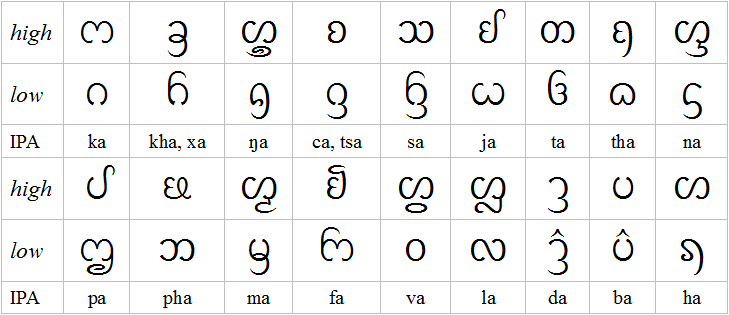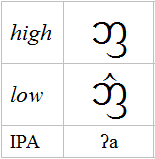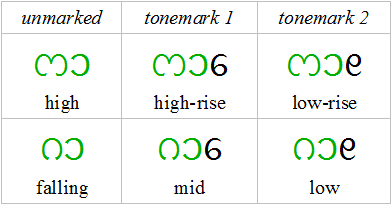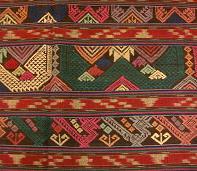The New Tai Lue script is a simplified form of Lanna script, used for the Tai Lue (or Xishuangbanna Dai) language of ethnic Tai people in Yunnan province, southern China. (Xishuangbanna is the Chinese form of Sipsong-phan-na “twelve thousand rice-fields”.) This simplified version was developed in China during the 1950s. The font shown here was made by SIL International.
Consonants
There are two forms for each consonant, referred to as high and low class. In combination with tone suffixes (see below), each class implies one of six tones for their syllable. Note how five high-class consonants use a leading high-class /h/, with their low-class form written as a subscript below that. Consonants have an inherent /a/ if no vowel mark is present.

A glottal plosive (sometimes silent) is written before initial vowels.
A special form is used for consonants which close a syllable. There is also a subscript for medial /w/ coming after consonants (especially /k/ and /kh/), and two common shorthand glyphs.
Vowels and Tones
The main simplification comes in the representation of vowels, bringing them down in line with the consonants. The first table shows the final monophthongs. In order to shorten a final vowel (except /u/), the short /a/ glyph is suffixed as is shown here in red for short /i/. Medial vowels tend to be short. Note that some vowel glyphs are written before their consonant.

These are the diphthongs:

In order to obtain the full range of tones (six), syllables can use high or low class consonants and/or one of two tone-mark suffixes. Here is the complete series for the open syllable /ka:/
Numerals
The numerals are in the tradition of Mon-Burmese-Lanna.

Sample texts
1. The SIL font demonstration passage.
2. Passage from a children’s book.






